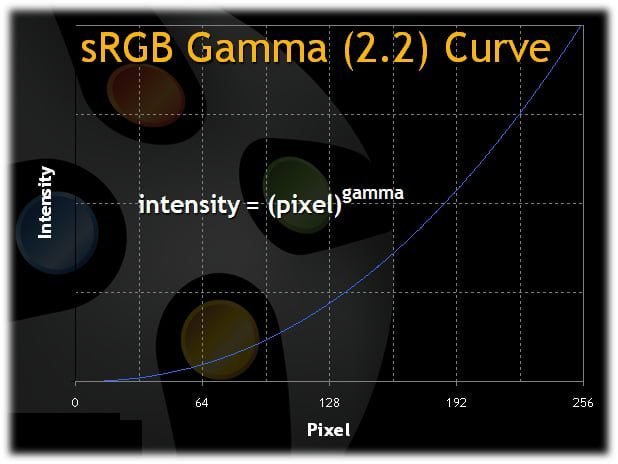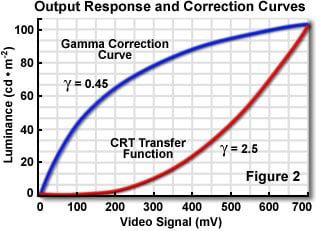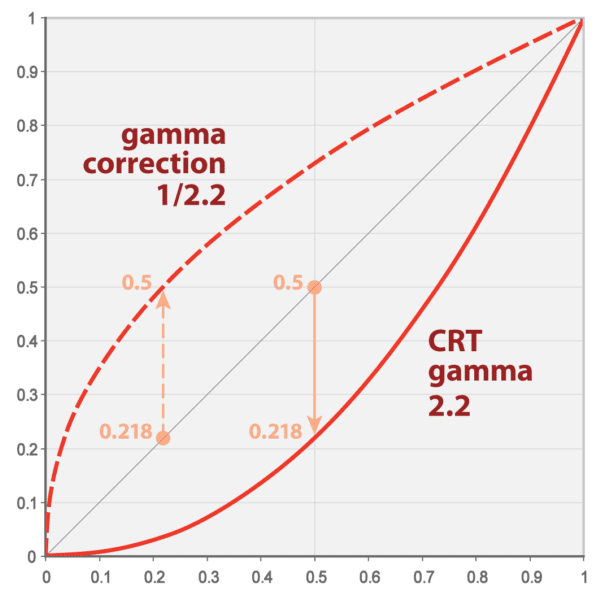Is perhaps the most controversial topic in the area of the image. Pages and pages of written arguments, dozens have fallen on the table hundreds of views have been formulated. In this article, we will try to outline the situation in an attempt to shed a little light on this dark matter!!
First, let’s start with the theory. What is gamma and particularly what are the so-called gamma correction that we are interested in practice:
Gamma is a numerical parameter about the mapping and conversion of video signal into brightness values in our receiver. Confused; Nice … listen to this and you’ll understand everything …
This process of our receiver is determined by the EOCF, IE, the well-known electro – optical conversion process (electro – optical – conversion – function)!!!
No, your not dupe, truth is, however are the truths about developers, electronic and mechanical. Therefore, stop immediately and go into the common vernacular of cinephile bash and deal!!
For us ordinary mortals, therefore, gamma correction is a parameter that darkens or lightens our image. Don’t worry, all these psiloakatalabistika more or less the same say. In practice, therefore, when touch the phone icon, gamma or contains the numeric values (1.8-2 – – 2.2 2.4, etc.), or nominal (reference, standard, cinema, normal, high contrast etc.) are saying in our device to play the gradations of brightness with a specific light intensity. So, the result is our picture seems dark or bright.
Let us imagine these gradations like 100 stairs where we give in our device command to lighten exponentially (keep this exponentially in your mind because it is essential for the correct calculation). When, therefore, we choose the gamma setting 2.2 light up our steps in a specific way. As we climb in prices skoteiniazoyme our image and as we descend the light up. Therefore, a value of 1.9 for instance will result to have brighter gradations. Thus is born the eternal question:
And what setting is correct in order to have a reference display;
Short answer: there is only a value.
Explain shortly …
After a long period of disagreements and personal choices, introduced some reporting standards from international organizations (ITU – EBU – CIE), so that there is a common or at least similar starting point (Yes, I still have not found!!!).
Therefore it becomes widely accepted that the reference monitor, referenced them in the mastering of the tapes, have the highest brightness of about 100-120 nits, black black as possible (below 0.01 nits) and gamma correction using the exponential power of 2.4. The surrounding lighting in the room is equal to or less than 1 lux. As you understand, we talk about ideal conditions when designing reports. Under these conditions the copy comes out of the room.
To see a little more analytically the factors:
- Display brightness 100 nits. Masta … immediately is born the first reasonable question: ‘ go And I have a projector and playing between 12-16 FL (aka 41 – 55 nits) what do I do? I can’t see a reference as to the gamma; Short answer: Yes and no. Why you’ll understand it below in the analysis of calculating the gamma.
- Black very low. As important is the brightness of the device, both the black because virtually defines our stairs does gamma correction. Similarly you’ll understand why the same analysis.
- Exhibitor 2.4. This is the force that was preferred as a reference because it gives a balance to the picture. That however;
- In a dark room. No, imifwteino, not bright, not day, rather than at noon, not a mikroyli floor lamps lit. Tar, katramia and darkness. Why? Let’s explain immediately starting upside down.
There are many factors involved and engaged so anything to grasp and to describe. To describe, however, in such a way that the other knows, must be done in compliance with some constants, some conditions. Imagine the studios to regulating the gamma with whomever they liked lighting environments. Else a lampitsa, others a katostara, others in darkness, another with spots in the corners. Grinder!! Everyone would see different things from each other and the Babel would be in the corner. So, it was much easier to extinguish the lights and Eclipse from space to xanatsakwnomaste how many lux is appropriate to accompany the home show.
OPA, to sit a while!! Why not see the same? Since I have the same black and white itself, why not see the same?
Because the surrounding lighting plays a vital role in the illustration. Not seeing the same picture in broad daylight on our terrace in the evening that will open our receiver. At noon, our image will look dull and washed out while the evening all will freshen, lost kontrast will revert and watching will become much more attractive. Exactly the same, does the gamma correction in our image. When the illuminating too e.g. using a power of about 1.7 1.8 – flataretai image losing contrast with overexposure of details of the scene. On the other hand, using a darker example gamma 2.8 – 2.9 picture presents us with high contrast, however, the dark gradients everytime I have krassarei (disappeared) and details of scenes will not be distinguished. Thus, it was decided the 2.4 as standard.
Fine, then. … pin a 2.4 and I’m OK … OK?? OK No always and everywhere!
If you see at bat cave probably are okay. If, however, the viewing includes ambient light artificial or natural, then 2.4 isn’t the recommended setting gamma. According to Charles Poynton there need some adjustments so that the end result is similar to that which sees the master room under different treaties …
The key point concerning the consumer’s gamma is this: What we
seek to maintain at presentation is the appearance of the colors at
program approval, not necessarily the physical stimuli. If the
consumer’s display and viewing conditions differ from those at
mastering, we may need to alter the image data to preserve
appearance.
The key phrase of Poynton is the last sentence. Tells us in short, do not attach to noymerakia. When circumstances change, and we change the noymerakia to achieve the desired result.
If the power function on
R’G’B’
– display gamma – is dialed back
a little, that contrast and colorfulness are reduced. At about 300 nt,
with ambient illuminance of 5 or 10 lx, and with a surround of say 5%,
decreasing gamma from 2.4 to 2.2 will visually compensate the effect.
So, if your consumer has such an environment, I recommend gamma
of 2.2. If your customer preferred to display the same imagery at
48 nt, in darkness (zero ambient illuminance), in a 0% surround, then
gamma of 2.6 (as in digital cinema) might be appropriate. In a really,
really bright environment, or with a really bright display (say 400 nt or
500 nt), decreasing gamma to 2.0 might be appropriate.
From this it follows that the gamma is on a fixed value when talking about references with absolutely clear conditions and specifications, but, on the other hand, a simulation wildcard when we reference in our own viewing conditions. Therefore, and can be suitable 2.0 and 2.2 and 2.3. It all depends on our site and viewing conditions.
Immediately is born a logical question …
Nice! And I know that I will prosomoiwsw the master’s room 2.4 in my area? I know what the Director sees detail and what is not seen; How do I know what needs to be illuminated and what not in order to choose the appropriate value;
Unfortunately, there is no answer to this easy. If we want to pseirisoyme so much or we want to be absolutely accurate simulating conditions, then necessarily have to have the same knowledge to do it. What does that mean? How to be perfectly, or anyway very close in the sense of the reference monitors, must necessarily have seen the reference monitor!! Yes, not playing something else … We need to know specific scenes, have imprinted in our minds in order to try to move them as we can more faithfully in another device and under other circumstances. This is the best way to select the exponent gamma correction.
However, things are not so tragic. Knowing that our image is poised under normal viewing conditions (a lampitsa for evening viewings) with gamma from 2.2 up to 2.4, looking and running our balance somewhere in between these values. It is essential to understand that there isn’t a gamma and finish. Reading, people like Poynton to use words like and might recommend, you realize why there isn’t a fixed price coming rains snowed …
In the next post I will analyze the calculation of gamma and the choice for the 1886 ITU which is so much about lately.
Ygiainete!!










1 Comment
What’s up with all the messed up words?